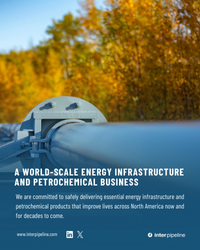The crude oil market was agog yesterday with a news story broken by the Wall Street Journal that the Department of Commerce Bureau of Industry and Security (BIS) had provided letters of ruling to Pioneer Natural Resources and Enterprise Products Partners that would allow these companies to export a limited amount of wellhead condensate starting in August. If these rulings are more than just trial balloons sent up by the BIS to test the waters then they contradict previously accepted requirements for processing condensate before it could be exported. Depending on the yet-to-emerge fine print, these rulings could have a significant impact on US condensate exports as well as revenue prospects for those companies that have committed to throughput capacity at currently planned condensate splitters along the Gulf Coast. Today we navigate the nuances of the story.
Regular RBN readers will be familiar with the condensate export saga from our many previous posts on the topic. The issue revolves around somewhat arcane definitions of hydrocarbon liquids produced at the wellhead, whether they count as crude oil or a lighter hydrocarbon called condensate and under what circumstances they can be exported. The latest of those posts from just a few weeks back imagined a world in which the export of condensate was allowed by the BIS (see Imagine There’s No Export Ban).
For those less well versed on matters condensate, we start with some definitions – feel free to skip this paragraph if you are a regular). Condensates are light hydrocarbons containing a significant percentage of naphtha range material. There is no universal standard for what defines a condensate, but some number between 50 and 55 degrees API gravity is typically the dividing line used to differentiate condensates from light crude oil (see Fifty Shades of Condensate Which One Did You Mean?). Some condensates can get much lighter, 80 degrees API or even higher. US condensate is arbitrarily divided into two broad categories. The first is lease condensate produced at or near the wellhead when it condenses from natural gas at surface temperature and pressure. Some lease condensate is also produced at the wellhead in stabilizer units designed to remove heavier hydrocarbons from natural gas (more on stabilizers later on). The second category is plant condensate, also known as natural gasoline, pentanes plus or C5+, that remains suspended in natural gas at the wellhead and is removed at a gas processing plant (see Like A Box of Chocolates – The Condensate Dilemma). Both categories of condensate are substantially similar in composition but the US Energy Information Administration (EIA) arbitrarily defines lease condensate as crude oil and plant condensate as a natural gas liquid (NGL -pentanes plus). Furthermore, Department of Commerce - Bureau of Industry and Security (BIS) regulations also define lease condensate as crude oil. As such, lease condensate is included in BIS regulations introduced in the 1970’s to restrict the export of US crude oil except to Canada or in specific circumstances from Alaska and California (see I Fought the Law). Thus lease condensate exports are prohibited even though plant condensate exports are perfectly legal.
But there is a further nuance to those BIS regulations that all of a sudden became the center of attention yesterday, and that is the extent of processing required for transforming lease condensate such that the export rules no longer apply to it. That is important because, if the BIS letters of ruling turn out to be a real indication of a wider policy change, then we will be dealing with a new definition of lease condensate and when it can be exported. We are not convinced that the BIS would actually make such a change with a ‘stealth” move like this, but you never know. To explain what all the fuss is about we start with what we know. Here’s the relevant section of the Federal regulations administered by the BIS – part of US Code Title 15 CFR 754.2 (see a complete copy here):
““Crude oil” is defined as a mixture of hydrocarbons that existed in liquid phase in underground reservoirs and remains liquid at atmospheric pressure after passing through surface separating facilities and which has not been processed through a crude oil distillation tower. Included are reconstituted crude petroleum, and lease condensate and liquid hydrocarbons produced from tar sands, gilsonite, and oil shale. Drip gases are also included, but topped crude oil, residual oil, and other finished and unfinished oils are excluded.”
Up until the WSJ story broke yesterday, most everyone assumed that the bit about “processed through a crude oil distillation tower” meant that if you wanted to export lease condensate you had to first process it through a refinery distillation tower. Trouble is that the production of increasing volumes of condensate from US shale plays – in particular in the Eagle Ford basin in South Texas, has overwhelmed the capability of US refiners to deal with this type of light hydrocarbon that most refineries were not designed to process in large volumes. During the past two years however, several US midstream companies have been busy making plans to build a kind of simple refinery called a condensate splitter (see Whole Lotta Splittin’ Goin On). These stand-alone units process condensate into its component fractions – mostly NGLs, naphtha and distillate or jet kerosene. Using a splitter allows a producer to transform lease condensate by a simple distillation process into hydrocarbon products that can then be exported.
Join Backstage Pass to Read Full Article









